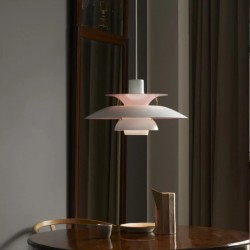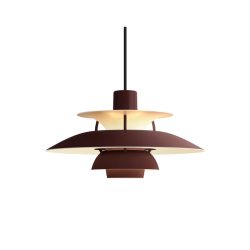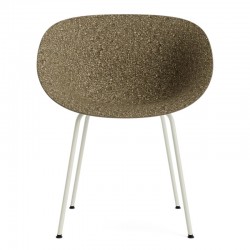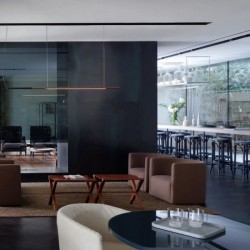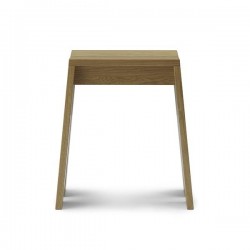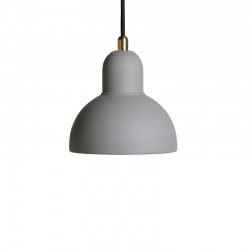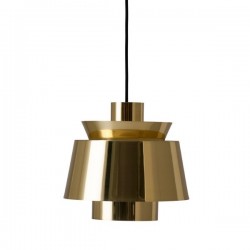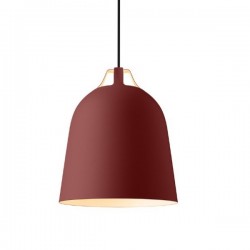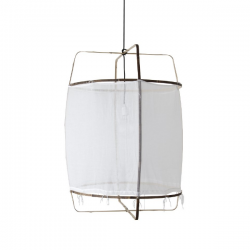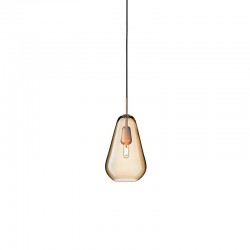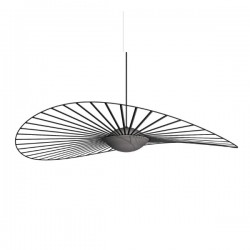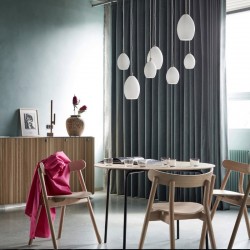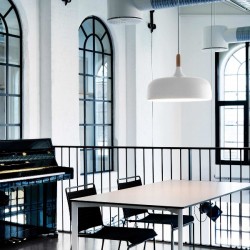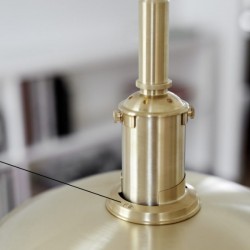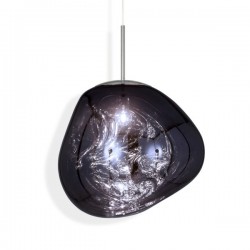Louis Poulsen PH 5 Pendant Light - 150th Anniversary Edition
Poul Henningsen developed the PH 5 in 1958 in response to constant changes in the shape and size of light bulbs.In this way, a lamp was created that could be used with any light source. The iconic design is based on the same principles as Henningsen's three-shade system, which ensures that the light is soft, pleasant and completely glare-free.That makes it the perfect table lamp for the dining room. Originally, the PH 5 was equipped with red and blue lampshades to improve the color of the light.However, in later designs they have been removed as modern light sources reproduce daylight much more effectively than in 1958.
The PH 5 is available in a number of different color variants and is a much-loved and well-known pendant lamp, found in many homes around the world.
This anniversary edition is painted matte white on the outside with soft pink on the inside, which provides a soft, warm light, while the metalized brass supports add a nice touch.
- Specifications
Material Colour Matt white, pale rose, metallized brass
Bulb base E27 Light source 9-12W LED (not included)
IP rating 20 Protection class II
Voltage 230 V Nominal frequency 50 Hz
Certifications and labels CE marked, tested and approved according to European standards
Cable length 300 cm
Cable colour White Cable material Textile
Weight 2.4 kg
Canopy Yes Ceiling plug- Size Description
Width 50 cm
Diameter 50 cm
Height 26.7 cm
-
Poul Henningsen
Poul Henningsen was born in Copenhagen by the famous Danish actress Agnes Henningsen. He never graduated as an architect, but studied at The Technical School at Frederiksberg, Denmark from 1911-14, and then at Technical College in Copenhagen from 1914-17. He started practicing traditional functionalistic architecture, but over the years his professional interests changed to focus mainly on lighting which is what he is most famous for. He also expanded his field of occupation into areas of writing, becoming a journalist and an author. For a short period at the beginning of WWII, he was the head architect of the Tivoli Gardens in Copenhagen. But like many other creative people, he was forced to flee Denmark during the German occupation but soon became a vital part of the Danish colony of artists living in Sweden.
Related products
Normann Copenhagen Mat Armchair
Oluce Ilo Suspension Lamp 487
Normann Copenhagen Let Stool
Fritz Hansen Kaiser idell Pendant Lamp
&Tradition Utzon Pendant JU1 Brass
Eva Solo Clover Pendant Lamp Medium
Ay Illuminate Z1 Black with Cotton Cover
Nuura Anoli 1 Pendant Lamp
Petite Friture Suspension Lamp Vertigo Nova Medium
Northern Unika Pendant Lamp
Northern Acorn Pendant Lamp
Tom Dixon Melt Big Pendant Led
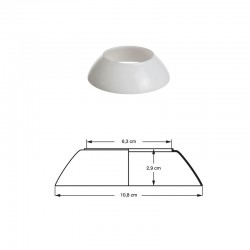
Louis Poulsen PH 2-1, middle glass shade
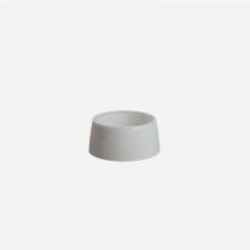


 EUR
EUR



